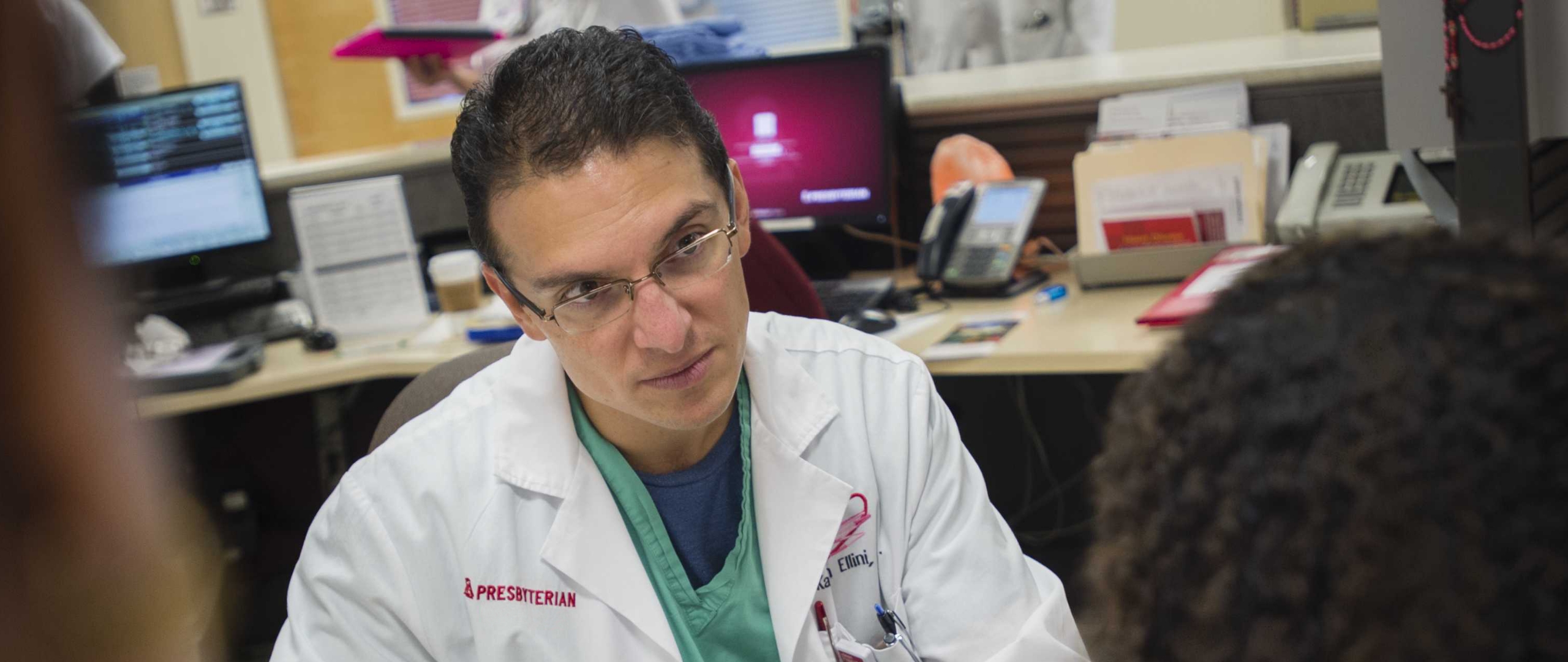
Presbyterian Heart and Vascular Care Providers
We have a highly skilled team who can provide a wide range of services from diagnosis to treatment.
Magnetic Resonance Imaging (MRI)
Magnetic resonance imaging (MRI) is a noninvasive test that uses a magnetic field and radiofrequency waves to create detailed pictures of organs and structures inside your body. It can be used to examine your heart’s muscle, valves, and chambers, how well blood flows through your heart, major blood vessels, and to identify areas of the brain affected by stroke.
MRI may be used instead of other tests that use radiation or iodine-containing contrast dyes such as X-ray, angiograms, and computed tomography (CT) scans.
Using MRI to look at blood vessels and how blood flows through them is called magnetic resonance angiography (MRA). Unlike a traditional X-ray angiogram, this procedure doesn’t require inserting a catheter into your arteries.
Who is eligible for a MRI?
MRI of the heart lets your doctor see if your heart is damaged from a heart attack or if there is a lack of blood flow to the heart muscle because of narrowed or blocked arteries.
MRI of the brain can be used to diagnose stroke, aneurysm, and other brain abnormalities.
MRI of the pelvis and legs can help diagnose peripheral artery disease (PAD).
What conditions can be diagnosed with a MRI?
An MRI can help your doctor diagnose many different heart conditions, including:
- Tissue damage from a heart attack.
- Heart valve disorders (valvular heart disease).
- Congenital heart defects and the success of the surgical repair.
- Problems in the aorta—the heart’s main artery—such as a tear, aneurysm (bulge), or narrowing.
- Diseases of the pericardium (outer lining of the heart muscle) such as constrictive pericarditis.
- Heart muscle diseases, such as heart failure or enlargement of the heart, and abnormal growths such as thoracic tumors.
- Reduced blood flow in the heart muscle help determine whether heart artery blockages (atherosclerosis) are the cause of your chest pain.
How do I prepare for a MRI?
MRI is a safe and painless test for most people. Check with your doctor about the safety of MRI if you:
- Have been told you have kidney problems.
- Are pregnant, especially during the first 3 months.
- Have a stent or artificial heart valve, or if you have had open-heart surgery recently.
- Have any implants, clips, or metal devices inside your body. You should not have an MRI unless the device is certified as MRI safe.
- Have tattoos or permanent (tattooed) makeup. You might feel a burning feeling on your skin from the metal in the darker inks of the tattoo.
Preparation:
- Before your MRI scan, eat normally and take your usual medicines unless your doctor tells you not to.
- Don’t bring your credit or debit cards into the MRI room. The machine might erase or damage the magnetic strip on the back of the cards.
- Remove all objects that may contain metal or electronics (jewelry such as rings or earrings, hairpins, dentures, watches, and hearing aids) before the test.
What should I expect during my MRI?
A radiologist or MRI technologist usually performs the scan in a hospital, clinic, or imaging center using special equipment.
- You’ll lie down on a moveable table that slides into the MRI machine. The machine looks like a long metal tube.
- Depending on which part of your body needs to be checked, a small coil may be placed on that part of the body.
- Your technologist will watch you from another room. You can talk with him or her by intercom. In some cases, a friend or family member may stay in the room with you.
- The MRI machine will create a strong magnetic field around you, and radio waves will be directed at the area of your body that needs to be scanned. You won’t feel any pain or pressure.
- During the MRI scan, the magnet produces loud tapping or thumping sounds and other noises. You may be given earplugs.
- In some cases, you may have an intravenous (IV) line in your hand or arm for injecting a contrast agent into your veins (for an MRA).
- An MRI scan lasts between 30 and 90 minutes.
You’ll need to lie still during the exam because movement can blur the images of your body. You can get a sedative to help you stay calm.
After your MRI:
- You can usually go back to your normal activities right away.
- If you had a sedative, you should have someone drive you home.
- The radiologist will examine the images and send your doctor a copy of the report.
Why choose Presbyterian for a MRI?
Presbyterian’s Heart and Vascular team has many different options to help you manage your heart condition. The team performs various diagnostic tests and procedures to help form an accurate diagnosis and create individualized treatment plans for your heart health needs. Depending on the type of heart condition you have and its underlying cause, the team can recommend a wide variety of treatment options, including lifestyle modifications, medications, and procedures. Our cardiologists and cardiovascular surgeons work closely together for cases in which surgery is the best treatment option. We also offer a customized cardiac rehabilitation program at our Healthplex, where clinically appropriate, which can improve your endurance and exercise tolerance, as well as improve heart-related symptoms. Your cardiologist will work with the rehabilitation team to create a plan that will be tailored to your individual health needs.